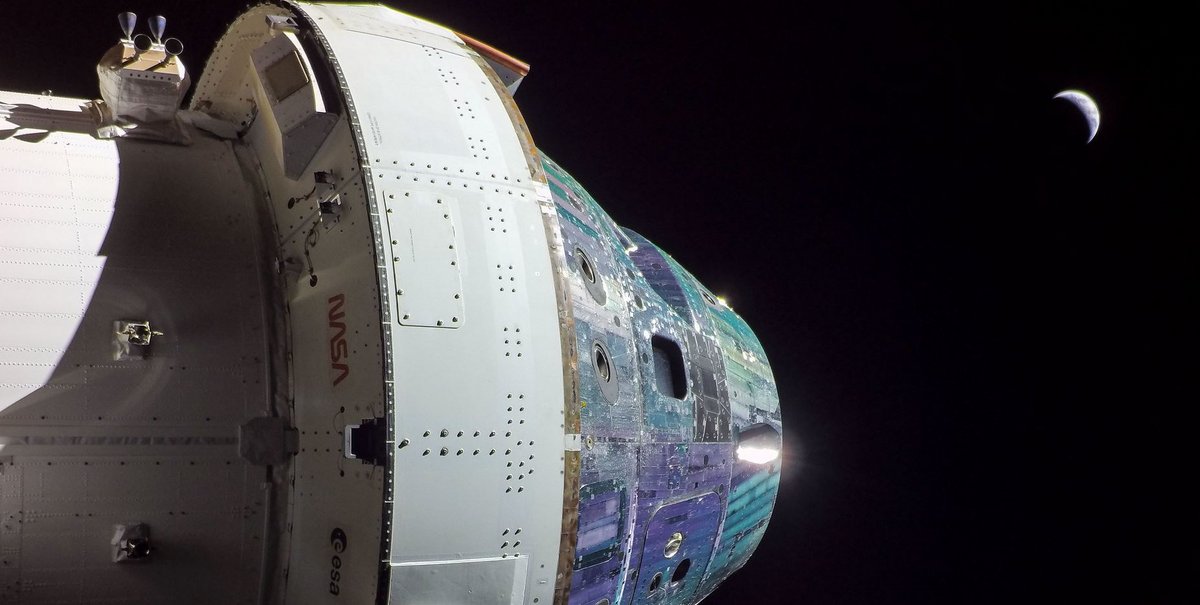This April 10, the American space agency threw the stone into the pond. At the end of a reinforced agreement in the Artemis project, Japan obtains two places on missions which will land on the lunar surface. They will be ahead of their European colleagues… but why? The explanation is both simple and very political.
Smiles, a signature, and above all a big statement. This April 10 in Colorado Springs, on the sidelines of one of the major annual conferences in the space sector, NASA and its Japanese counterpart, JAXA, cemented an agreement prepared for a long time. And the announcement had the effect of a thunderclap.
A Japanese astronaut will therefore be the first non-American to set foot on lunar soil as part of the Artemis project. First of all, it is an opening that should be welcomed, because until a statement by American Vice-President Kamala Harris last December, it was not known that NASA would take its international partners to the surface. lunar. Next, you must understand that this agreement is conditional.
It’s not free
Indeed, it is not just a matter of good international understanding between Japanese and American partners. If the context of the Asia-Pacific region is favorable (American pivot, AUKUS defense agreements) and allows political support, it is indeed an exchange. JAXA negotiated these places for Japanese astronauts in exchange for the provision of a large pressurized lunar vehicle, a real mobile base, on which Japanese teams have been working in advance for several years.
Called “Lunar Cruiser” and developed on a public-private basis with Toyota, there has been talk of this vehicle since 2020, but it was then a concept whose design was not fixed, just like the exact contours of the project. Now, JAXA has committed to delivering this massive vehicle to be sent to the lunar surface by 2031 at the earliest, between the Artemis VI and VII missions.
The Lunar Cruiser must, like its smaller cousins recently funded by NASA (the LTV, for Lunar Terrain Vehicle), be pilotable from the Earth or the Moon, offer an airlock, accommodate two astronauts for periods of up to 30 days and operate on the Moon for about 10 years. It is nothing less than the largest and most ambitious wheeled exploration vehicle in space history!
However, this is not just an announcement. As part of the April 10 agreement, the sending of a Japanese astronaut to the lunar surface is indeed conditional on the progress of work on the rover. If all goes well, this astronaut will be part of the Artemis IV mission, currently planned for 2028-2029. Calendar that obviously needs to be taken with a grain of salt…
Logical turmoil in Europe
In Europe, this decision by NASA caused a lot of noise. And indeed, putting aside this impressive Lunar Cruiser, the ESA is doing much more in accounting terms than its Japanese counterpart in the service of the Artemis program. Space Europe provides the service module for all Orion capsules, and it has also invested heavily in the future station in lunar orbit, the Gateway. So, how can we understand that it is a Japanese who will set foot on the Moon before a European?
First, you should know that for NASA, each position is different. The delivery of Orion’s service modules is actually not purely a contribution to the Artemis program. This is ESA’s “payment in kind” for its current participation in the ISS since the end of the ATV automated cargo ships. Rather than giving money, the ESA provides Orion’s service modules. So, by extension, for the Americans, it is already compensation, no need to offer us places in exchange.

Likewise, the Gateway Station is run as its own entity for Artemis, and those who participate gain seats either on missions around the Moon or on missions within that Gateway Station. The ESA, which is the largest contributor outside the United States, has three “seats”, Canada two (including the one occupied by Jeremy Hansen on the Artemis II mission), the United Arab Emirates one seat, and Japan one as well, in addition to places for surface missions.
We can completely criticize this form of subjugation to the United States. Basically, the latter exchange places on missions in infrastructures which, without international partners, would not exist. But each agency knew, when committing to it, under what terms the negotiations would be conducted. Ultimately, each partner should find their way, but friction arises because Artemis missions, at least by the end of the decade, will be rare. Artemis II in 2025, perhaps Artemis III in 2026-2027, then Artemis IV… There isn’t something for everyone.
Forever the second
Finally, President Biden, when he announced that a Japanese would be the first non-American to walk on the Moon, would have done well to add in the same sentence “ as part of the Artemis program “. Because China could well steal this title from both the Japanese and the Europeans.
Its own moon landing is planned for 2029-2030, and this plan has been making strides in recent years. And let’s not forget the private sector, who are starting to promise the Moon to their clients…
Source : SpaceNews


1